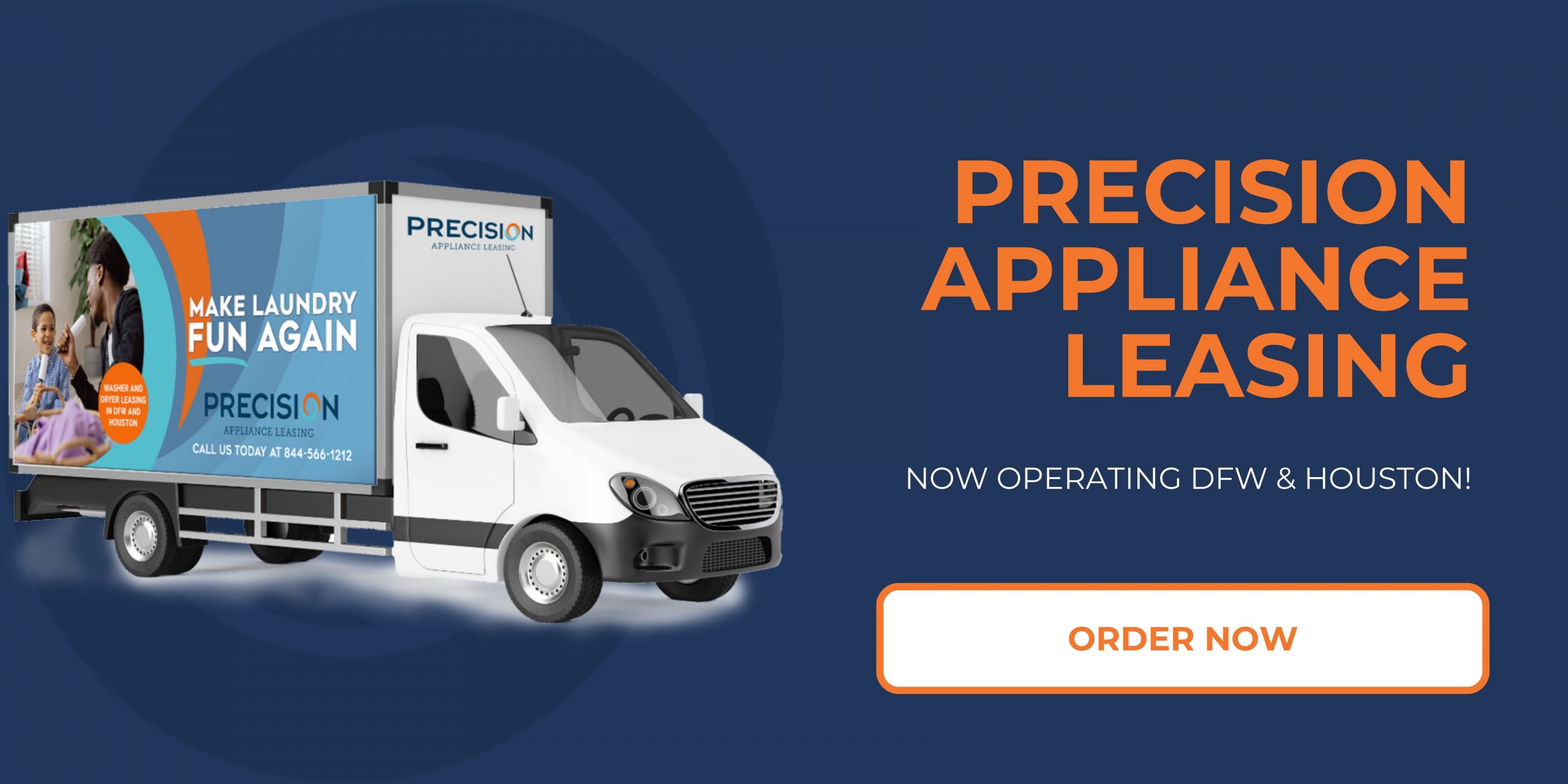Washer and Dryer Leasing 101: What’s Included and What to Expect for Short-Term Rentals
In the fast-evolving world of short-term rentals, convenience and comfort are paramount for both property owners and guests. One key aspect that can elevate the rental experience is the availability of essential appliances, particularly washers and dryers. As travelers increasingly seek accommodations that offer home-like amenities, leasing washers and dryers has become an attractive option for landlords aiming to cater to the needs of their guests. This practice allows hosts to provide the convenience of laundry facilities without the hefty upfront costs of purchasing appliances outright.
Washer and dryer leasing options vary widely, encompassing everything from compact units suitable for smaller spaces to larger models that can handle heavy-duty loads. Understanding what is included in a leasing agreement is crucial for landlords and property managers. From installation and maintenance to potential service agreements, the nuances of a lease can significantly impact the effectiveness of the appliance in a rental setting. Furthermore, knowing what to expect regarding delivery timelines and contract terms can help landlords avoid common pitfalls and ensure they are providing a seamless experience for their guests.
For renters, the benefits of having access to laundry facilities can enhance their overall stay. It not only fosters a sense of autonomy and comfort but also addresses practical needs, especially for families or individuals on extended trips. This article delves into the ins and outs of washer and dryer leasing, elucidating the critical components of leasing contracts, the advantages they present for short-term rentals, and considerations that both landlords and guests should bear in mind. Whether you’re a property owner looking to improve your rental’s appeal or a guest seeking assurances about your temporary home, understanding washer and dryer leasing can make a significant difference in how you approach the short-term rental experience.
Overview of Washer and Dryer Leasing Options
When it comes to rental properties, especially short-term leases, providing a washer and dryer can greatly enhance the appeal of the unit. Washer and dryer leasing options provide a convenient solution for landlords and renters alike. For landlords, leasing may reduce upfront costs since they do not need to purchase the appliances outright; instead, they can make arrangements through leasing companies that specialize in providing these essential household items. For renters, particularly those in transitional living situations or who prefer not to invest in large appliances, leasing offers the flexibility of access to laundry facilities without the commitment of ownership.
Leasing typically involves selecting from various models offered by leasing companies, ranging from budget-friendly, basic units to state-of-the-art washers and dryers with advanced features. The leasing process generally includes an agreement that outlines the terms, duration, and costs, as well as any maintenance responsibilities that may fall to the owner or the leasing company. Additionally, the documents often specify what types of usage are allowed, ensuring that the appliances are handled properly throughout the lease term.
In the context of short-term rentals, such as vacation homes or corporate housing, leasing washer and dryer units can also facilitate a smoother transition between tenants. It allows property owners to maintain a rotating set of appliances that can be easily exchanged or serviced without the complexities of ownership. This can also mean that the property manager has access to newer appliances that are more energy-efficient, providing a better experience for guests while minimizing environmental impact and operational costs. Furthermore, leasing can provide greater peace of mind, as many agreements include maintenance provisions that ensure the units are kept in good condition—an important factor for landlords looking to provide a high-quality living experience to their tenants.
Ultimately, washer and dryer leasing options can offer flexibility, convenience, and enhanced property value while meeting the needs of both property owners and renters in the growing market of short-term and transitional housing.
Key Inclusions in Leasing Agreements
When you enter into a leasing agreement for a washer and dryer, it is essential to understand the key inclusions that come with the contract. Leasing a washer and dryer typically encompasses several components that can significantly affect your overall rental experience. These inclusions can differ from one leasing company to another, but there are common elements that many agreements share.
First and foremost, the physical appliances themselves are included in the leasing agreement. This means you will receive specified washer and dryer models as part of your rental. It is crucial to check the models offered, as they can vary in terms of features, energy efficiency, and capacity. Additionally, leasing agreements usually include delivery and installation of the units, which often saves the renter the hassle and expense of arranging these services independently.
Another important aspect often included in leasing agreements is maintenance and repair services. Many leasing companies will cover the costs associated with routine maintenance and repairs, ensuring that any issues with the machines are promptly dealt with without extra charges to the renter. This can provide peace of mind, especially for short-term rentals where the tenant may not want to handle unexpected appliance breakdowns.
Moreover, leasing agreements may include terms regarding service calls or customer support. This means that should you encounter any problems with your washer or dryer, you have access to a support system, which can be invaluable when you are juggling other responsibilities during a rental period. Understanding the specifics of these inclusions helps renters feel more secure in their decision to lease rather than buy.
Understanding the key inclusions in leasing agreements helps set clear expectations for both the landlord and the tenant, ensuring that both parties know their rights and responsibilities regarding the leased appliances. For short-term rentals, these inclusions play a particularly vital role, as they can greatly influence the living experience and the tenant’s overall satisfaction with the rental arrangement. As you consider your leasing options, ensure you carefully review the agreement to clarify what is included, what is not, and any associated costs that might come up during the lease term.
Cost Considerations and Budget Tips
When it comes to leasing washers and dryers, understanding the cost considerations is critical for ensuring that you stay within your budget while meeting your laundry needs. Typically, the cost of leasing appliances can vary significantly based on several factors, including the type of appliances, the leasing duration, and the specific terms set by the leasing company. Some companies may offer attractive rates for longer-term leases, while others might present promotional offers to entice short-term rentals. Therefore, it is essential to compare various leasing options to find the best deal that aligns with your specific situation.
In addition to the monthly lease payment, it’s important to factor in other potential costs associated with leasing. These may include delivery and installation fees, maintenance and service fees—though some leases may incorporate maintenance as part of the package—insurance costs, and any penalties for early termination of the lease. Confirming what is included in the lease agreement can help you avoid unpleasant surprises and better manage your budget. Always read the fine print of the leasing contract, as it will outline your financial obligations as well as any additional costs that may arise over the course of the lease.
Budgeting effectively for a washer and dryer lease also requires considering the total cost of ownership over the duration of the lease. This means that while the monthly payments may appear manageable, it’s beneficial to calculate the total expense you will incur over the entire leasing period. By doing so, you can compare this total against the cost of purchasing similar appliances, helping you make an informed decision. Furthermore, if you expect significant changes in your living situation—such as moving to a new place or transitioning into a new role—it may be more practical to lease rather than buy, as leasing often provides greater flexibility for short-term living arrangements.
Lastly, it is advisable to set aside a small contingency fund for unforeseen expenses that might arise, such as repairs or unexpected service calls. By considering these costs and budgeting carefully, you can navigate the leasing process with confidence, ensuring that you have the right appliances for your needs without straining your financial situation. Taking a methodical approach to washer and dryer leasing will help you find a solution that not only suits your lifestyle but also offers peace of mind in terms of financial management.
Maintenance and Service Responsibilities
When it comes to leasing washers and dryers, understanding maintenance and service responsibilities is crucial for both landlords and tenants. Generally, maintenance responsibilities can vary significantly based on the leasing agreement in place. Typically, the leasing company provides the appliances and agrees to handle most of the service and repair work during the lease term. This means that if the washer or dryer malfunctions, the tenant does not have to take the initiative to fix it or bear the cost—this is the responsibility of the leasing company.
However, it’s important for tenants to be aware of their part in maintaining the machines. This includes routine tasks such as cleaning lint filters, ensuring that the machines are used according to the provided guidelines, and reporting any issues in a timely manner. Protecting the equipment by using the appliances correctly helps prolong their life and ensures efficiency. Landlords should encourage tenants not only to report problems promptly but also to understand how to maintain the machines between professional servicing.
In a short-term rental context, maintaining the reliability of laundry appliances is essential for tenant satisfaction. If tenants come to expect reliable appliances as part of their rental experience, landlords could face complaints and dissatisfaction that could impact their business. Therefore, clear communication about maintenance responsibilities can aid in setting expectations and fostering a positive relationship between landlords and tenants. Most leasing agreements will contain clauses related to maintenance, including response times for repairs, which can help prevent misunderstandings down the line.
Ultimately, knowing who is responsible for what when it comes to maintenance and service helps create a smoother renting experience. With clearly defined responsibilities, landlords can ensure that their properties remain attractive and functional, thereby enhancing tenant contentment and ensuring that the leased appliances are cared for effectively.
Pros and Cons of Leasing vs. Buying
When considering whether to lease or buy a washer and dryer, it’s essential to weigh the pros and cons associated with each option. Leasing appliances, especially for those in short-term rentals, can provide considerable advantages. One of the primary benefits of leasing is the reduced initial cost. Leasing typically requires little to no down payment compared to purchasing, which often necessitates a larger upfront investment. For renters or those who frequently move, leasing can also offer increased flexibility, as it allows individuals to avoid the hassle of transporting appliances during relocations.
On the downside, leasing may come with higher long-term costs. While the monthly payments might seem manageable, over an extended period, these payments can exceed the one-time expense of buying. Additionally, leases often have strict terms regarding usage and maintenance, and renters may find themselves facing fees for any damages or alterations. It’s crucial to fully understand the leasing agreement, including any additional costs that could arise throughout the term.
Buying appliances outright presents its own set of advantages. Ownership means that, after the initial expense, you are no longer bound by monthly payments, which can ultimately lead to savings. Additionally, you have complete control over the appliances, allowing for customization or upgrades without any restrictions. However, this option requires significant upfront capital and ties individuals to the appliances, making them less ideal for short-term living situations.
In summary, the choice between leasing and buying a washer and dryer hinges on lifestyle, financial situation, and the duration of residency. For those in short-term rentals, leasing often proves more convenient and budget-friendly, while buying might be more suitable for individuals who wish to make a long-term investment in their home. Understanding the specific needs and circumstances will aid in making the best decision regarding washer and dryer options.


